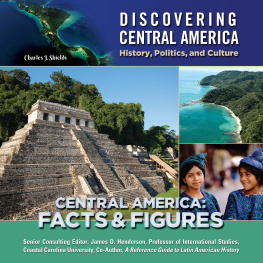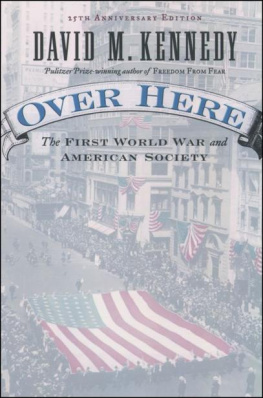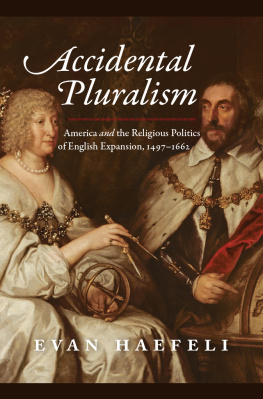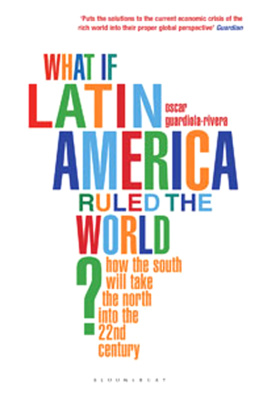Acknowledgments
W HAT GOOD FORTUNE for me that I was able to attract the help of two astute and willing readers who followed the progress of this work and made informed comments. I am highly indebted to Ella Milbank Foshay, an American art historian, and to Sanford Malter, an architect steeped in American history, for their unfaltering readiness to help. Each of them read every chapter carefully as they crossed the Atlantic once again in the accounts of the fifteen travelers whose trips to the New World are here recorded. They never failed to catch errors en route, nor to make astute observations. Each of them read every chapter carefully, three of which recording the travels of Hyde de Neuville, Frances Trollope and Charles Dickens appeared in an earlier form in The Magazine Antiques .
I also had the good fortune, at the start, to find my manuscript in the hands of Joanna Godfrey, senior editor of History and Politics at I.B.Tauris, who accepted it for publication and with whom I had an engaging exchange of correspondence. I salute her with enthusiasm. Ellie Robins and Alex Middleton edited and proofread the manuscript with remarkable perspicacity while Alex Billington, managing director of Tetragon, astutely guided the text into the final stages of design and printing. To all three, I extend a robust thank you .
There were others who were of help in various ways, and I am delighted to record their names: Tarik Amar, James Brust, Sally Carr, David Combs, Ze Kaplan and Alison Petretti. Let me not neglect to mention the names of my husband Istvn Dek, my daughter E va Peck and her husband Thomas Peck, who were all helpful in ways small, large, and ever affectionate.
GLORIA DEK
Foreword
A MERICA WAS a proud province in the nineteenth century. After their revolution, Americans knew they were no longer living in Europe. It was this knowledge that had provoked the American Revolution in the first place the sense of Americas local connection to destiny, of its local traditions and local forms of government. Nor, in the nineteenth century, did America have anything resembling Europes historic grandeur. It lacked the metropolitan sophistication of Paris and London, the musical magnificence of Germany and Austria, the endless artistic achievements of Italy. America was one of many provincial non-European places, though for a province its self-confidence was strange. Its muddy, unspectacular capital city was being built according to a grand architectural blueprint. New York was extending its urban chaos steadily up the island of Manhattan. Fantastic areas of territory were being annexed to the American republic, purchased, negotiated for or simply grabbed. Expansion was only the physical pretext for Americans constant habit of praising themselves, as Basil Hall put it, summing up his 1827 journey (see Chapter 3). The true source of their pride was political, not commercial or territorial. Americans believed themselves pioneers in the art of self-governance. If self-governance was at the heart of modern politics, then Europe might be the real province and America the unacknowledged center. American pride was counter-intuitive especially to the nineteenth-century Europeans who encountered it one of the many interesting novelties on display in the United States.
In Passage to America , Gloria Dek brings these surprised Europeans beautifully to life. Each of Deks travelers is the Columbus of a different America. The eye of the beholder is not objective, and the country to which these Europeans were voyaging, in the nineteenth century, was enmeshed in ceaseless change. It began the century an agrarian republic in thrall to the austere figure of George Washington, robustly committed to slavery and with no real image of what its culture was going to be. It concluded the century almost on a par with the European great powers, still coming to grips with Lincolns Civil War promises of freedom for African-Americans and of a new home for millions upon millions of European immigrants. Dek ends her book with Henry James returning to America in 1904, after twenty years in Europe and hardly able to recognize the country of his childhood. More than Europe, America was stepping decisively toward the future, in Jamess Europhilic estimation. James starkly separated America from Europe. Dek writes of a key question among Jamess contemporaries, that of whether the American nation represented a decided advance on European inequalities, or whether it had taken a giant step backwards. To ask this question is to ponder a world apart.
The answers were contradictory. Some found genuine liberty and progress in America, with suffrage and education more widely available than in Europe. Behind political excellence might lay generosity of character the hospitality, for example, that Tchaikovsky enjoyed during his 1891 visit. The equation could also be more complicated. Some saw vulgarity as the political norm in America, and some admired Americas political system while wondering about the status of American culture, or to use a word more resonant of the nineteenth century of American manners. There was often some tincture of the barbaric about America, in Thomas Hamiltons words, and this could make Americans outspoken pride baffling as well as annoying (see Chapter 5). The obvious American barbarism was slavery. It rarely escaped European notice, giving a salutary prick to the antebellum American conscience. Frances Trollope said little of politics in her scathing and scathingly funny Domestic Manners of the Americans (1832). Charles Dickens registered a similar skepticism about American manners after his 1842 trip. It is interesting to note that the critical commentaries of Trollope and Dickens earned them small fortunes back at home. If the literary marketplace was any measure, Europeans wanted America to disappoint them. Overseas barbarism confirmed civilization at home. Nevertheless, the will to European superiority, the mirror image of American pride, is at the periphery of Deks story.
The central story in Passage to America is of a politicalcultural map on which the borders are bracingly unclear. To go to America was to remain somehow in Europe. The grids common to so many American cities have their origin, Dek tells us, in the architectural thinking of Vitruvius. Americans spoke English, a bridge to Europes literature, which nineteenth-century Americans avidly read and which was not then under copyright in America one reason for Dickenss frustration with a country that adored him. Boston, Philadelphia, New York and Washington, DC, all echoed the European city, a claim advanced in Edward Diceys amusingly inaccurate description of New York as Venice without canals (see Chapter 12). Americans touching eagerness to lionize such heroes of European culture as Dickens and Tchaikovsky (invited to New York to celebrate the opening of Carnegie Hall) illustrates the proximity of Europe to America in this century of European hegemony. Even American democracy had its roots in European antiquity and in the European Enlightenment, which is why so many Europeans were willing to make the arduous sea voyage, to endure the often terrible travel conditions in America and to suffer through the locals long monologues of self-praise. They wanted to see what American democracy would mean to them: it was this curiosity that distinguished their travels from mere tourism. Broadly speaking, they had a share in creating American democracy, and in the twentieth century, as nineteenth-century Europeans seemed to anticipate, American democracy would have a share in the recreation of Europe.









